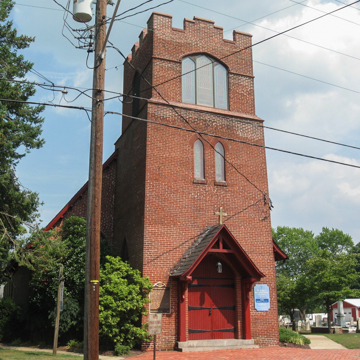In the early nineteenth century, the Episcopal Church was moribund in Delaware but eventually began to revive. The first bricks of St. Luke's were laid on May 1, 1838. Consecrating the Gothic Revival structure five years later, Alfred Lee, first Bishop of Delaware, praised its “very neat and appropriate style,” Gothic Revival being a favorite mode for Anglican churches everywhere during this period (see NK9.16). The steeple was replaced by a tower in 1904, at which time the roof rafters were renewed, memorial windows added, and the building electrified. A Parish House came in 1931. When fissures appeared in the brick-work, the W. D. Haddock construction company of Wilmington undertook urgent renovations, adding twelve concrete buttresses, to some at the time “an eyesore.”
You are here
St. Luke's Episcopal Church
If SAH Archipedia has been useful to you, please consider supporting it.
SAH Archipedia tells the story of the United States through its buildings, landscapes, and cities. This freely available resource empowers the public with authoritative knowledge that deepens their understanding and appreciation of the built environment. But the Society of Architectural Historians, which created SAH Archipedia with University of Virginia Press, needs your support to maintain the high-caliber research, writing, photography, cartography, editing, design, and programming that make SAH Archipedia a trusted online resource available to all who value the history of place, heritage tourism, and learning.





















